

BACKTRACKING WITH orchestramaxfieldparrish
Experimental guitarist, synthesist, and improvisor extraordinaire Mike Fazio was born and raised in New York City and began issuing commercially available recordings as early as 1987. Since then, the man has built up an amazing catalogue of material under the orchestramaxfieldparrish and now ÆRA guises as well as in working partnerships with fellow kindred spirits (such as Thomas Hamlin in Gods Of Electricity and Jeffrey Ladd in Life With The Lions). With an epic double-disc set To The Last Man / Index Of Dreaming about to be issued under the ÆRA name, Fazio kindly shed light on a number of releases, including: Tears (2002, re-issued 2008); The Silent Breath Of Emptiness (2008); “Waning Moon Over Sunless Sea,” his contribution to Kubla Khan (2008); Sundiving, the 2007 Gods of Electricity release; and the upcoming ÆRA opus.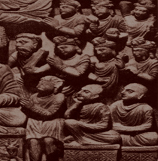
A. orchestramaxfieldparrish: Tears (Faith Strange, 2002 / 2008)
1. As sometimes happens, we familiarize ourselves with the work of a certain artist in non-chronological order, and that's exactly what happened to me in your case. My first exposure to your music came about through the most recent orchestramaxfieldparrish full-length The Silent Breath Of Emptiness (on your Faith Strange label) and hearing that remarkable work prompted me to approach you about creating a piece for the Kubla Khan release. I mention these details simply because the experience of hearing the earlier Tears (originally issued in 2002, remastered and re-issued in 2008) subsequent to the later material was initially jarring, simply because the instrumentation (voice samples, percussion, etc.) and styles used on Tears are so wide-ranging by comparison. With its stately timpani, snare drum, cymbal, and piano flourishes, “Dorothea Gets Her Wish,” for example, sounds startlingly different when heard alongside the purely synthetic guitar-based sound of The Silent Breath Of Emptiness. Was there anything in particular that prompted Tears' wide-ranging approach, or was that simply the style you happened to be working in at that time?
My initial concept behind orchestramaxfieldparrish was to have a very introspective solo vehicle that merged my own take on symphonic music with the art and the literary worlds, particularly mythology and not necessarily with the art of Maxfield Parrish per se but its suggestion of the serene and the sublime, where all of these concepts combine to make an impressionistic experience or a moment in time for me and hopefully for the listener too—a return to a memory, so to speak. Tears was actually the second series of pieces that I did for the orchestramaxfieldparrish project. The first album surfaced in parts, spread out over several obscure compilations that are long out of print back in the mid- to late-1990s. The initial recordings were all very much out of an ethereal Dead Can Dance point of view, orchestrated with an array of real and synthesized instruments, percussion sections, and voices. Some of that attitude is portrayed a bit on the first half of Tears. The remainder of those early recordings has never been released.
2. If I'm not mistaken, Tears was, to some degree at least, recorded during the aftermath of the World Trade Center attacks, a period that represented somewhat of a crisis point in your life in terms of music recording. How much was the album's material affected by that event, if at all? (It's hard not to hear the opening and closing minutes of “A Lot Like You,” for instance, as the noise produced by overhead planes.) In some ways, the track sequencing could be read as an analogue to the event, with the rather hymnal “Bow” and prayerful “Waiting for Twilight” meditations coming after the tragedy alluded to in “A Lot Like You.”
Tears was actually started before the attacks, particularly the first half of the album, I would say during late 1999. Up until that time in my life, I was doing a lot of live playing with various outfits, mostly with my 1990s dream pop band Life With The Lions with vocalist / flautist Jeff Ladd. We got to a point where financially it was not feasible to keep a working live band together and constantly go through the ups and downs of dealing with the music business at that time and the nonsense that labels would put alternative bands through. I had had enough of dealing with the men in suits that were interested in us but never substantially invested in us. The problem with the '90s for many artists was the undying quest by others to make money off of the artists' endeavors. It was a time of turmoil for a lot of labels and it eventually caused many of them to go under—too many A&R types looking for the next U2 and not having enough insight into what the underground really was all about.
I actually put the orchestramaxfieldparrish project on hold and wanted to turn my back on the whole industry as much as possible until 9/11 happened. Later on, reflecting on the day in the safety of my home made me realize I was indeed mortal and that if I was going to do something again musically, then I should just do it and get on with it and to hell with all the obstacles. The latter half of the album is definitely more somber in tone and that was done in the next few months directly afterwards. I found myself listening to people like Henryk Górecki and Arvo Pärt and Krystof Penderecki and Giya Kancheli again and I think that Eastern European approach shows through.
3. You're not afraid to incorporate sounds associated from past eras into your music, as evidenced by the Mellotron that surfaces in “A Lot Like You.” Why did you choose to use the older instrument when a newer and less unwieldy instrument could have been used in its place? Is it a matter of nostalgic affection, or perhaps that you wanted to sonically evoke that earlier era, or do you just simply love its sound and all of the associations it brings with it?
The Mellotron is a magical instrument. I have a great affinity for Mike Pinder's work on the old Moody Blues' records and consider him the master of the instrument. If a musician has the chance to actually record with one these days he/she should jump at the opportunity to do so. Most of the time, Mellotrons are not readily available, especially here in the States, so I would suggest Mike Pinder's sample CD. There's also software called M-tron which includes the entire library of tapes which is pretty vast and has all of the Roxy Music and Beatles effects that were done strictly for them. You're right; when you hear the Mellotron you think of early-'70s music.
4. “Waiting for Twilight” and “The Tears of Christ” exude a meditative character in their guitar writing that's reminiscent of Robert Fripp's recent soundscapes recordings (e.g., A Blessing Of Tears, The Gates of Paradise, At the End of Time). Unlike some artists, you're quite open about acknowledging your influences so I'm wondering whether Fripp has been an influence and if tracks like the two mentioned reflect that? I'm assuming that it's next-to-impossible to be a “progressive” guitar player without Fripp having figured into your development in one way or another. Who are some of the other artists, guitarists or otherwise, who've influenced you the most?
I love a lot of Fripp's work—Exposure, Red with Crimson, his playing on Eno's Before And After Science and Another Green World, and the duo projects Evening Star & No Pussyfooting with Eno being my favourites—but I wouldn't consider his exact fingering style a main influence. I think it might be a mutual love of certain classical and jazz composers and a desire to fill sound that might be what you are hearing. I will say though I feel he kept some of his best playing for other artists' albums like for Bowie, Eno, Peter Gabriel, David Sylvian, Daryl Hall. All of those records are brilliant and timeless. I can see the Fripp analogy on "Waiting For Twilight" for the fact of the lead guitar going through a Big Muff (although I don't think Robert Fripp uses Big Muffs or Foxy Lady fuzz boxes anymore). I love them. The Fripp soundscapes albums are all done with midi guitar that is triggering synthesizers and digital delay lines whereas my approach is strictly through digital and analog effects chained in unconventional ways using a regular electric guitar in order for me to paint with sound; having said that, the soundscapes albums are truly sublime works of art, a totally different approach with totally different goals and results in mind. I don't use loops.
My roots are firmly in the post-punk movement of the late '70s which was a total backlash to the pomp and circumstance of early '70s prog, with Wire, Magazine, Bill Nelson's Red Noise, and The Flying Lizards being four of the most important proponents of that experimental change. But I do love some of the prog movement of the '70s, particularly Henry Cow, Van Der Graaf Generator, Jade Warrior, Gentle Giant, Universe Zero, and Art Zoyd, the more cult-oriented, left-of-center bands. I don't agree with some artists and “critics” these days who are quick to belittle our rich musical past and deny any connection to '60s, '70s, and '80s music to what may be happening now and are clearly contradicting what they propose, especially those who are in the so-called mainstream right now. The truth is, everything has been done before; there is nothing new under the sun. It's what you make of it all that ultimately matters. I prefer to be in tune with anything that is left-of-center in the underground that has the intrinsic spirit of a DIY process and is created with skill, heart, and care of sound and not with trying to sell out as a goal to be something it is not. This is a fascinating time for experimentation and self-expression.
Influences: Coltrane, Miles, Joy Division, Hector Zazou, The Anti-Group, Bill Nelson, David Sylvian, Bowie, Eno, Organum, Eberhard Weber, Krystof Penderecki, Dominic Frontiere, Joseph Schwantner, Stuart Dempster, Arvo Pärt.
Guitarists: John McGeoch, Martin Moscrop, Steve Tibbetts, Fred Frith, Phil Manzanera, Mick Ronson, John McLaughlin, Hendrix.
Producers: Martin Hannett, Ivo Watts-Russell, Adrian Sherwood, George Martin.
Other miscellaneous faves: a certain ratio, The Stranglers, Nico, John Cale, Peter Murphy, Peter Hammill, Wire, Russell Mills, Gavin Friday, Joni Mitchell, Tim Buckley, Nick Drake, Roxy Music, Peter Gabriel, Led Zeppelin, Ferial Confine, Ora, Mirror, Andrew Chalk, Christoph Heemann, no-man, Beatles.
All around one hell of a guy: John Winston Ono Lennon.
5. Broached on its own terms, “The Tears of Christ” is a remarkable seventeen-minute piece arranged for electric guitar only. To what degree is it an improvisation and what gear did you use to generate the multiple layers of guitars that coil around one another during the piece?
Again, that was just an array of effects, with use of panning to simulate a pseudo-binaural effect brought out in the mixing process. It's just two mono guitar takes using totally different sets of effects. One was improvised first and the second on top of the first afterwards. There are no other overdubs. The gaps of silence were all intentional. I've always approached the guitar in a non-traditional way and have always tried my best to expand its sonics into the symphonic using effects, different tunings, and generally producing as much of a wall of sound and presence and atmosphere as I possibly can with what is at hand. As time wore on, I eventually learned that the silence between notes is equally or if not more important than the notes themselves and an important realization for any musician is to eventually come to this conclusion. I think "The Tears Of Christ" sums up this attitude for me in its totality.
Most if not all of the parts I commit to tape are stream-of-consciousness improvisations and first takes with very little if any editing to the actual notes unless I hit a really bad note. Most of my time spent on a recording is in the mixing and mastering stages, to accentuate what has already been recorded. I don't believe in making a record by doing parts over and over until they are "just right." If they aren't right from the start for me, then they never culminate into finished pieces. I forget about them. I've thrown away entire albums' worth of nonsense. The challenge of capturing an inspired performance either live or in the studio is one that I wholeheartedly believe in. I don't believe in producing a record with endless takes of the same thing. It never works.
6. “Music From the Empty Corner,” by contrast, sounds more like an ethereal, Eastern-inspired gamelan meditation. Is that at all close to what you were aiming for in the piece? And why did you include a gongs interlude towards the end of it?
I would agree it turned out like that but I don't believe that was my original intention. I just viewed it as a somber, isolationist piece of driftwork meditation. The gongs made for a deeper area of reflection within the piece itself.
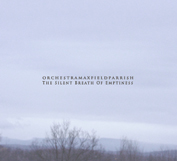
B. orchestramaxfieldparrish: The Silent Breath Of Emptiness (Faith Strange, 2008)
7. Though Sundiving, your debut Gods Of Electricity collaboration with drummer Thomas Hamlin, came out before The Silent Breath Of Emptiness, I'd like to stay with orchestramaxfieldparrish before shifting the focus elsewhere. As already mentioned, The Silent Breath Of Emptiness is radically stripped down compared to some parts of Tears (though The Silent Breath Of Emptiness could also be read as the natural continuation of the style explored in “The Tears of Christ”). What prompted the move to purify the orchestramaxfieldparrish sound?
There's quite a bit of time that passed between Tears and The Silent Breath Of Emptiness, almost six years and in between I produced and / or was involved with several other albums and / or projects and then Sundiving was a such a huge production for us that I felt that I had wanted to get back to my roots of purely abstract atmospheric guitar playing and leave all the rest of the instruments alone and just do a solo guitar album. I was asked to participate in a gallery event in Brooklyn where I would supply a piece of music that would play quietly in the background and thought that this would be the perfect opportunity to do some guitar work again but the project was constantly being put on hold due to lack of funding and so I didn't give it much thought, until around December of 2006 when I finally got the go-ahead, thus the recording. Unfortunately, the whole art project was scrapped due to lack of corporate funding in the end. I felt the music was too good to let rot so I released it myself.
8. Secondly, what prompted you to record the four-part piece in a single take?
It simply was an instance where I set up and pressed play. I had absolutely no idea what I was going to do. I simply stopped when I felt it was over. You can tell in the beginning of it that I am feeling my way around, so to speak, and then as time progresses I get into the whole spirit of it. I love the fact that it's warts n' all. It's human. I wasn't about to go into the recording itself and start editing bits and pieces because things might not be right on the money, especially with the non-traditional tunings I use and on the spot detuning and scraping and feedback and all the chaos I love to bring to my guitar, it would never work, but who's to say what's right and what's wrong with an experimental improvisation? I don't set out to create music that copies with premeditation a previous work and therefore works things out ahead of time; quite the contrary, I draw from my experiences and influences within the moment and really never know what is about to transpire. I'm constantly listening to a vast array of music and have been all of my life. I come from a long history of improvisation interacting with many, many different types of other musicians in live settings and involve myself with many varied types of music, not just my own.
9. Can you talk a bit how about the gear you used to generated sounds such as the steely washes and rolling waves of lulling industrial rhythms that appear throughout?
An old Gibson guitar into an old Fender amp. Tubes. Feedback. Control. One track of electric guitar–no overdubs. Mono. Reprocessed for stereo in the mix. Simple. Old-fashioned. No synthesizers. Nothing like that. But don't tell anyone. Sometimes you can achieve the most unorthodox results from looking at simple things in an unorthodox way like delay lines and reverbs. People have occasionally e-mailed me insisting they knew for a fact that it was either a bank of synthesizers or many overdubs of guitars. Oh well…
10. The Silent Breath Of Emptiness is certainly compelling on sonic grounds alone (the metallic waves swell to almost violent proportions during part three) and can be appreciated on those terms only, but I'm also wondering what you were aiming at conceptually in the recording?
I have been quietly trudging along, playing this style of heavily-effected, atmospheric, droning, wall-of-sound guitar since the ‘80s but I was never satisfied how it eventually wound up on various recordings with other instruments sitting around it and felt the private recordings I was doing that were all done live to tape and independently distributing on cassette at the time were much more reflective of my intentions. I finally felt that it was time to do a very minimal solo guitar album that was both very familiar to me and to others who knew me personally and reflective of what I was doing in downtown New York City for many years and at the same time new to others that were eventually becoming familiar with my work in other parts of the world through the orchestramaxfieldparrish project. A lot of my recorded contributions in the past have never been released due to circumstances mostly out of my control. Still other contributions to other artists' records were released in small amounts and have now scattered to the four winds.
Conceptually, I think when I was in the midst of recording The Silent Breath Of Emptiness, I knew I had started from a very quiet and serene place but as time went on I was drawn into a more confrontational direction, into more of the shadows. You cannot have light without shadow and instinctively I've learned that a good recording will not work conceptually without these two elements coexisting with one another. At the end of what turned out to be "Part Three," I knew it was time to approach a state of reflection since "Part Three" was like going through the gates of hell for me and "Part Four" surfaced as this acknowledgement of the divine. Therefore the ecclesiastical temperament, but I think maybe I was thinking of Bach in the abstract sense, to be totally honest. After all, it was done on Christmas Day so it was only natural for me to resolve the piece into this direction.
11. Given the spontaneous nature of the four-part piece, it's rather surprising that you chose to accompany it with a much more methodically-created “Reconstruction-Afterthought” (not that the two pieces sound radically unlike one another). Why did you decide to include the second track?
An artist off the radar like me named Brendan Walls had put out a wonderful album called Cassia Fistula a few years back. I decided to do that remix after hearing the Cassia Fistula remixes that Andrew Chalk and Christoph Heemann had done of that initial recording and put out by Idea records. They were extremely inspiring to me on first hearing and felt they brought the original work to another dimension with their exceptional and skillful approaches to his music, all the while keeping the original spirit of the work in mind. Hopefully, I have done the same.
(The textura review of The Silent Breath Of Emptiness can be read here.)
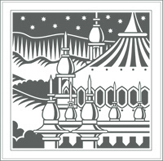
C. orchestramaxfieldparrish: “Waning Moon Over Sunless Sea,” Kubla Khan (textura, 2008)
12. Needless to say, I love the beautiful nineteen-minute work you created for the textura release. What made you decide to create it using pedal steel guitar, and what effects did you use to alter the instrument's sound?
I became interested in playing pedal steel guitar by first hearing Bruce Kaphan on the California album by American Music Club back in 1988 and the next few AMC records like Rise, etc., which are all incredibly brilliant since I thought that what he was doing with the instrument was very much in line with what I was doing with guitar so it was fascinating to me to try and learn it and cross-reference my approach. I quickly found out how difficult the instrument really is and that it did not translate to any other instrument I already knew. So I never bothered to learn it in the conventional Nashville way and just let it reflect my attitude I had towards electric guitar playing. The instrument I used on "Waning Moon Over Sunless Sea" is a twelve-string pedal steel with four pedals and four knee levers going through a series of Lexicons to an old amp and recorded in mono. The piece was improvised in one pass and then two more very minimal improvised passes were done afterwards for texture and counterpoint and then mixed in. The lights were definitely kept very dim in the room for that one.
13. How specifically did Coleridge's poem inspire the composition? Was it the text fragment (used for the track title) that directed you in a particular way, or was it the poem in its entirety?
The whole poem has a very psychedelic quality to it, something Pink Floyd might have thought up and put to music back around Dark Side Of The Moon if you didn't know better. If you close your eyes after reading that poem, it could be very trippy—and inspiring. It definitely sets an atmosphere and that's something I very much wanted to musically translate.
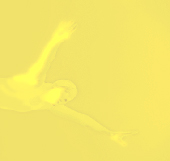
D. Gods Of Electricity: Sundiving (Faith Strange, 2007)
14. Naturally, working with percussionist Thomas Hamlin (of Black 47 renown) under the Gods Of Electricity name pushes your sound into a different direction. At the same time, certain trademarks remain in place, the most obvious being the penchant for long-form works, with “Clouds of Granite in a Clearing Sky” the obvious example in Sundiving's case (though it's formally a three-part piece, it carries on uninterruptedly for thirty-eight minutes). Anchored by a repeating, near-tribal electronic pulse, “Clouds of Granite in a Clearing Sky” is an all-encompassing, at-times collage-like opus that somehow manages to accommodate and reconcile multiple binaries: acoustic and electronic obviously, but also tints and shades, ancient and futuristic, natural and synthetic, earthy and galaxial, clear-headed and disoriented, and so on. First of all, how did the two of you produce the piece (I read somewhere that it's actually composed of three hundred audio tracks)? Did you stitch it together from separately-created sections, or did you create it live by improvising over the pulse?
We set out to produce a work that was very much as challenging to the ear and out of vogue as can be. I had been listening to a lot of Miles Davis's Bitches Brew-era recordings and thinking how out of vogue they were for that time around 1970 and not to say Sundiving is at all analogous to the magnificence of Miles Davis but those are rather difficult to the untrained ear and that was the effect we wanted as well. Something not commercial at all for now and something that unleashed our Industrial and Noise roots and leanings as well towards bands like 23 Skidoo, T.A.G.C., ClockDVA, Einstürzende Neubauten, Organum, and S.P.K. in that either someone loved it or it totally went over their heads and it simply was not for them.
I think the real genius of Miles Davis was that he always challenged himself and moved forward and tried new things and really didn't give a damn what others thought of him at all, especially that whole Bitches Brew era which most of his previous fans absolutely hated and a lot of people still do. But they were brilliant and a monumental part of our musical heritage in that they showcased a whole new group of talented musicians to the world and consequently created a new form of beauty. The first long piece on Sundiving was approached as a collage in that all of the tedious work to come up with the exploding electric noise parts were previously done and recorded and then flew in on many, many tracks, hundreds, sporadically over the rhythm without any real forethought as to where they would sit thus creating a natural conflict. Other parts were created and recorded and done later such as the quiet interludes and all of the synthetic bird and nature sounds (something I learned from listening to Brian Eno's On Land a million and a half times) and then pieced in to create as much of a discontinuation of any semblance of time or meter. We wanted to erase any concept of preconceived timing in the process. Anti-timing. I think the reason why "Clouds Of Granite In A Clearing Sky" ultimately works for us is that both consonance and dissonance live side by side for an extended period of time and that alone forces the listener to pay attention to what's going on in the mix. The rest of the cuts on Sundiving are jams.
15. Thirteen minutes into movement one, fragments of a choir enter, which in turn suggests a connection to a work like Ligeti's Lux Aeterna. Did you have any particular artist references in mind during the creation of the piece, or did you try to keep it as free from that as possible?
It's mostly free-form, but I can see the György Ligeti cross reference now that you mention that Mellotron and piano section. Some of the melodies seem to be fragments of memories of old ‘60s TV show soundtracks like Naked City and Ben Casey.
16. The first movement is titled “Dreamland,” suggesting that you were aiming to create a sonic analogue to the electrical activity that occurs in the brain during dream states while the second's “Starstreams” title implies that you were attempting to aurally map stars' movements across the night sky. How literally should the listener approach your music with respect to aligning track titles to the music itself?
I love the imagery that track titles can give to a piece of music and I think titles as well as artwork are paramount for any recording to ultimately succeed for me. I would agree with your analogies here although my track titles are just one approach that someone can take to the music inside.
17. After “Clouds of Granite in a Clearing Sky,” the album moves Hamlin's natural-sounding drum playing to the forefront. In what resembles an aggressive, ten-minute jam, “Slick-O-Phonic” surprises by marrying a Roni Size-styled drum'n'bass groove (replete with acoustic bass playing) with guitar synthesizer playing that calls to mind Pat Metheny in frenzied solo mode. Though the track's unusual in its combination of elements, it surprises most of all in its direct referencing of the drum'n'bass genre and for being so earthy in comparison to much of your other material.
One of the concepts we have toward the Gods Of Electricity project is to make the music appealing to either others remixing it or us being called in to remix other's works as was the case when 17 Pygmies asked us to work on their first album in many years, 13 Blackbirds. There were three remixes done for that record, the abrasive Gods remix, the ethereal Jo Gabriel remix and an eerie orchestramaxfieldparrish remix using just Louise Bialik's voice alone in a rather Hafler Trio sort of way, but the third didn't make the final list. I think it might have spooked them too much.
"Slick-O-Phonic" was geared for the dance floor and for remixing. It's amazing that you picked up on my only attempt at midi guitar in the reference you cited, since everything else on Sundiving is keyboard-based synthesizer, v-drums, or real instruments like upright bass, tambura, trap drums, African percussion, electric guitar, cymbals, etc. I ultimately found the midi guitar as too inorganic for me, being a guitarist first and synthesist second, and will never use it again. I didn't know Pat Metheny played one; I'm only familiar with his first couple of ECM recordings like Bright Size Life and Watercolors, etc. I believe John McLaughlin's guitar synth playing on Inner Worlds came to mind while I was recording that track as far as that part goes, but he pulls it off so much better than I ever could.
18. Is it true that another Gods Of Electricity album is already in the can? Can you tell us about it, how it sounds compared to Sundiving, and when it might be released?
We did three complete albums at the time of Sundiving, but I don't feel the need to release everything I record. There is another one that has just been done but is not mastered that is totally high energy and there is yet another one that's being worked on that is more tribal and ambient that needs a ways to go yet. There are no release dates set yet for either one.
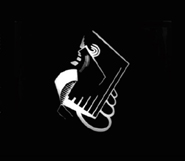
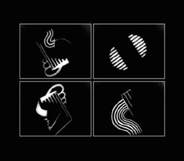
E. orchestramaxfieldparrish presents ÆRA: To The Last Man / Index Of Dreaming
(Faith Strange, 2009)
19. First things first: what inspired the ÆRA name? Given that Æ can be read “ash” are we to read the “ash-ra” name as a subtle reference to the ‘70s German Krautrock group Ash Ra Tempel (formed in 1971 by Manuel Göttsching, Klaus Schulze, and Hartmut Enke)? Certainly the ÆRA exudes a cosmic quality that one could associate with the band.
ÆRA follows from Æ, which was the first band that Thomas Hamlin and I had back in the 1980s. It was an experimental post punk / noise / art / out / dissonant / polyrhythmical project which was active in the performance galleries circuit of the time. There are only private cassette pressings of our work. Nothing at all mainstream. It was at the time of Fred Frith's Massacre and Percy Jones' Stone Tiger here and we played the same club circuit as them. This was before either Black 47 or even Chill Faction. We were just out of high school. I would agree with you about the cosmic references and its correlation to Krautrock, but I wasn't at all thinking of any other band when the name struck, only my own musical past. Afterwards I found a reference to an obscure Krautrock band called Aera from the early ‘70s, but I don't know their work. I guess there are indeed synergistic aspects in many disparate things in this world.
20. I'm curious as to why you chose to release the companion volumes, To The Last Man and Index Of Dreaming , under the ÆRA name when they could legitimately been issued as orchestramaxfieldparrish recordings. What is it about the new material that demanded it be released under the new name?
I felt that this was a new direction for me in that it didn't quite fit within the orchestramaxfieldparrish framework or Gods Of Electricity for that matter. I'm positioning this project as orchestramaxfieldparrish presents ÆRA, which is how Coil would release albums under their Coil presents Black Light District and Coil presents Time Machines projects in that the members of the band felt that those recordings spoke to them in another way all the while keeping the spirit of Coil inherent within the music. I feel ÆRA represents another time, another place, not here and not of now, but it keeps within my concepts of invoking forgotten memories and juxtaposing the past with the future. Also, with ÆRA, I will be looking into translating these new ideas to orchestra in the future. To The Last Man is apocalyptic, hallucinatory, and futuristic as well as primitive and ritualistic at times whereas Index Of Dreaming is ideal to, well, dream to. I feel taken together as a two-disc set, they make a coherent aural experience and statement. It might have made the perfect soundtrack for the 1939 New York World's Fair.
21. Index Of Dreaming's twenty-eight-minute closer “1/3” obviously represents a zenith of sorts in terms of these latest recordings. Was it created in real-time as a single take? How transporting an experience is it when you're in the middle of a half-hour track and you're at the center of such an immense sound?
“1/3” was an immediate reconstruction of the original session so I felt it should sit at the end of Index Of Dreaming which is disc two. There was some editing involved as I wanted to have an enormous sound that ebbed and flowed into whispers and streams and ghosts and that's always challenging to do in the studio but I think the piece ultimately works since it is transporting and immersing. At low levels, it's blissful. Played back at a high volume on the right stereo, it might peel the paint. It is what it is and that's all it is. It works for me.
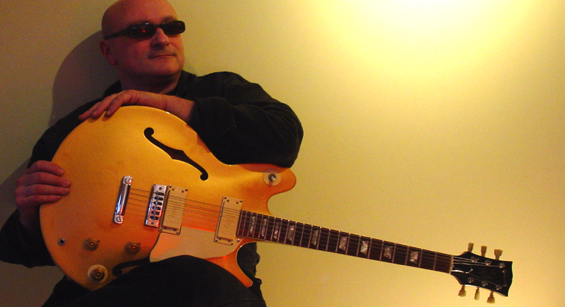
December 2008![]()